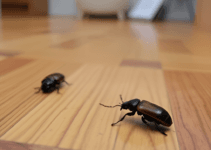Coyotes are growing in population and thousands are living even in the big cities of North America. As the numbers of coyotes increase, they’re becoming more courageous and adaptive to our human-shaped environments and they’re less easily intimidated.
Keeping Pests Out for the Winter | How To Build A House (howtobuildahouseblog.com)
Coyotes have been the focus of predator-control efforts for years in the western part of the United States where sheep production is big business.

Explore decorative objects and figurines on Houzz
In these areas, poisons, traps, snares, airplane hunting, dogs and other methods have been used to control or eradicate coyote populations.
Surprisingly, these efforts to control coyote populations have not decimated the animal’s numbers. In fact, the coyote’s range and numbers have increased.
However, coyotes consume large numbers of rodents, so any reduction in the population of coyotes may have the unintended consequence of an accompanying increase in the population of rabbits, rats, and other small mammals.
But because, many coyotes venture farther out of the forest and into rural areas, towns, cities and campsites, we have both a need and a responsibility to deter them from built environments or where humans are undertaking activities, in order to avoid harm to either humans or coyotes.
According to the Humane Society of the United States, livestock and pet owners can take some simple steps to help prevent coyote attacks.
Tips to Keep Coyotes Away
1| Use Fencing: It is recommended that the fence be at least 6 feet (1.8 meters) high and also extend 1 foot (30cm) underground to prevent coyotes from digging their way in. This is often the case on livestock farms, where the temptation is so great that a hungry coyote will do anything to get in.
- Electric fences can provide a very useful option at a reasonable price for surrounding large areas of livestock.
- Barbed wire placed at ground level can deter the coyote from digging under the fence.
2| Food Sources:
– Don’t leave bowls of pet food or water outside overnight.
– Keep garbage in a sturdy container with a tight-fitting lid.
– Don’t place garbage cans out at the curb until the morning of your scheduled pickup day.
– Compost in enclosed bins instead of exposed piles.
– Clean up around bird feeders.
– Keep all pets inside at night and watch small dogs while outside, even during daylight hours.
– Keep cats indoors.
3| Use Dogs, Donkeys or Llamas:
– A good guard dog can protect sheep and goats from coyote damage. Larger breeds, such as Great Pyrenees, Komondor, Anatolian shepherds and Akbash, often work well to intimidate the much smaller coyote.
– Donkeys are used by Missouri livestock producers to guard sheep and goats. Most donkeys have a natural dislike for coyotes and dogs and bond well with livestock. Do not place two donkeys in the same pasture or in adjoining pastures because they will bond with each other and not with the livestock. An effective guard donkey remains with the sheep or goats at all times.
– A few progressive livestock producers in Missouri use llamas as guard animals. Studies in Iowa have shown these animals to be quite effective in protecting sheep, goats and cattle. Aggressive toward both dogs and coyotes, llamas are easy to handle and bond with livestock in a matter of days.
4| Try Sound: Sound can have an excellent impact on a coyote that has wandered into your yard or campsite. Yell and make a lot of noise in any way possible.
Motion activated alarms can be useful. An even more tech-savvy option is the new Anti-Coyote sound system. This system relies on the fact that cougars occasionally kill coyotes. The systems emit replicated cougar sounds, and may keep coyotes away.
5| Wolf Urine: One natural and innovative answer to the growing coyote problem is the use of wolf urine as a deterrent. Wolves are one of the coyote’s natural predators, and coyote populations drop as wolves are reintroduced into an area.
6| Lethal Methods: Lethal methods are the quickest way to stop coyotes from killing livestock.
7| Encounters with Humans: Humans tend to intimidate coyotes. On rare occasions, a coyote adapted to human presence as a result of feeding by humans will act aggressively. If you encounter a coyote:
– Do not run or turn your back. Instead, calmly back out of an area.
– Do not challenge coyotes by looking them directly in the eye.
– Make yourself bigger and make loud noises.
– Protect small children by standing between them and the coyotes and fight back if attacked.
– Use children’s toys that make noise, such as bangs, whirrs, jingles, etc
– Spray the coyote with a water hose.


